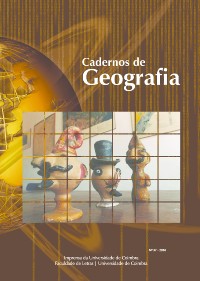Please use this identifier to cite or link to this item:
https://hdl.handle.net/10316.2/91163| Title: | O desenvolvimento de uma rota turística no litoral leste do estado do Ceará (Brasil) ancorada em paisagens culturais | Other Titles: | The development of a tourist route in the eastern coast of the state of Ceará (Brazil) anchored in cultural landscapes | Authors: | Diógenes, Conceição Malveira Santos, Norberto Pinto dos César, Pedro de Alcântara Bittencourt |
Keywords: | Tourist route;Cultural landscape;Territory;Rotas turísticas;Paisagens culturais;Território | Issue Date: | 2018 | Publisher: | Imprensa da Universidade de Coimbra | Abstract: | Este estudo se propõe a analisar a viabilidade para a implantação de uma rota turística ancorada em
paisagens culturais do Ceará, nordeste brasileiro. Os dois municípios estudados, Aquiraz e Aracati, estão localizados
na costa leste de Fortaleza, capital do estado e principal portão de entrada para os turistas. Os destinos
consolidaram-se no segmento de lazer, não trabalham o turismo cultural como um produto principal e/ ou como
produto complementar |à oferta existente. Identifica-se como ter cultura, dominar conhecimentos e habilidades
que permitem que pessoas compreendam e desfrutem de bens sofisticados, como obras de arte, literatura instruída,
espetáculos teatrais e saberes e fazeres do um grupo de um determinado lugar. As viagens, voltadas para
atrações culturais, são, portanto, oportunidades para se conhecer os berços culturais. O Ceará explora maioritariamente
a praia como produto turístico. O património histórico material e imaterial dos municípios estudados
seria, portanto, uma forma de diferenciação, dando visibilidade à expressão cultural local. Aquiraz foi a primeira
capital do estado, ocupa uma área territorial de aproximadamente 481 km2, sendo 30 quilómetros de praia.
As mais conhecidas são Porto das Dunas (Beach Park) e Iguape. Registra-se em seu território a existência de
quilombola e de uma tribo indígena. Aracati, com casas azulejadas construídas as margens do Rio Jaguaribe,
desenvolveu-se sobre a influência da Igreja Católica, com vocação comercial e exportadora e sob a égide do
poder econômico dos coronéis de gado, sendo uma das mais importantes aglomerações urbanas do estado nos
séculos XVIII e XIX. A praia mais conhecida é Canoa Quebrada. A integração dos dois de stinos, pensados de forma
integrada e colaborativa, possibilitaria o desenvolvimento de novas práticas turísticas, atribuindo novos significados
e usos aos espaços e ao patrimônio histórico. This study aims to analyze the viability to implement a tourist route anchored on Ceara's cultural landscapes in the Northeast of Brazil. The two studied municipalities, Aquiraz and Aracati, are located on the east coast of Fortaleza, the capital of the state and the main entrance gate for tourists. These destinations have consolidated themselves in the recreational sector. The cultural tourism does not work as the main product or as a complement to the offered one. It is identified how having culture, mastering knowledge and skills enable people to understand and enjoy sophisticated goods, like works of art, instructed literature, plays, know-hows and doings of a group of a particular place. Thus, cultural attraction orientated trips are opportunities to get to know the cradles of culture. Ceará explores the beach as its main tourist product. The material and immaterial heritage of the studied municipalities would, therefore, be a way of differentiation, promoting local cultural expression. Aquiraz was the first capital of the state with a territorial area of about 481 Km2 and 30 km of beaches. The most known beaches are Porto das Dunas (Beach Park) and Iguape. There is also one quilombola and one indigenous tribe in its territory. Aracati, with its tiled houses built on the shores of the Jaraguaride river, developed under the influence of the Catholic Church with a commercial and exporting orientation under the auspices of the economic power of cattle colonels, was one of the most important urban centers of the state throughout XVIII and XIX centuries. Its best-known beach is Canoa Quebrada. The inclusion of these two destinations, envisioned in an integrated and collaborative way, would allow the development of new tourist activities, assigning new meanings, and usages to spaces and to the historical heritage. |
URI: | https://hdl.handle.net/10316.2/44171 | ISSN: | 2183-4016 (PDF) 0871-1623 |
DOI: | 10.14195/0871-1623_37_2 | Rights: | open access |
| Appears in Collections: | Cadernos de Geografia |
Files in This Item:
| File | Description | Size | Format | |
|---|---|---|---|---|
| o_desenvolvimento_de_uma_rota_turistica.pdf | 3.7 MB | Adobe PDF |  |
Items in DSpace are protected by copyright, with all rights reserved, unless otherwise indicated.
